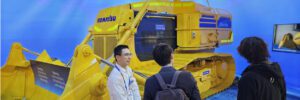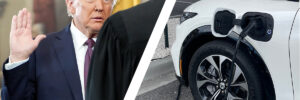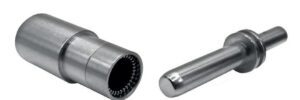The innovative environmental-friendly contact is designed to reduce power loss providing up to 90% more energy transfer.
Smiths Interconnect, a leading provider of technically differentiated electronic components, subsystems, microwave, optical and radio frequency products, announced today the introduction of Hypertac Green ConnectTM, a new lead-free and Beryllium-free hyperboloid high-power contact technology, to its established high relibility contact technologies for demanding applications.
As the world experiences a monumental shift on a scale not seen in a century – transitioning from fossil fuel engines to electric power – the importance of batteries has risen to the forefront of design across a wide range of systems. This includes their crucial role in applications spanning rail transport, defence, commercial buses, mining operations, boats, and ports.
A critical aspect that unites all these diverse applications is the method of interconnection. Presently, existing interconnect solutions in the market suffer from significant energy losses due to high contact resistance.
In response to this challenge, Smiths Interconnect proudly presents an advanced design of the original hyperboloid contact aimed at solving the issue of power loss.
This cutting-edge solution ensures optimal utilisation of every kilowatt-hour of energy stored in the battery, enhancing overall efficiency and performance.
Specifically tailored for battery systems market and related applications, this advanced hyperboloid contact design provides a robust connection capable of efficiently handling continuous currents of up to 500 amperes.
By facilitating efficient and prolonged energy transfer, this solution promises to revolutionise the way power is managed and used in various applications across industries.
The lower contact resistance of the Hypertac Green ConnectTM technology reduces heat build-up allowing the contacts to handle greater current in smaller contact assemblies without adversely effecting temperature rise.
The technology uses a set of socket wires, properly angled to form a hyperboloid-shaped, elastic and conductive sleeve. When the mating pin enters the socket, the sleeve expands around it, providing many lines of electrical contact with the mating pin, as opposed to a few “high spots” on a conventional contact.
Also, the elimination of beryllium and lead from the Hypertac Green ConnectTM delivers game-changing operational and environmental benefits. Both beryllium and lead require significant substance compliance management. Certifications of compliance, declarations of meeting threshold limits, or having to request, manage and monitor exemptions is both time consuming and costly. Complete removal of these materials reduces overall compliance documentation requirements. Most importantly, however, removing these materials improves the safety of our manufacturing process and for customers, because substances of concern are completely removed from our processes and the eventual costly need for environmentally-safe disposal is eradicated.
Finally, thanks to the improved crimp design of the socket, an increased contact area is established between the contact body and the multi-stranded cable, ultimately contributing to the unparalleled low contact resistance.
“To provide a groundbreaking solution to the growing battery systems market including high voltage packs for electric mobility, we have developed an innovative contact technology specifically designed to offer an unparalled performance by reducing power loss” says Mark Kelleher, VP and General Manager of the Connectors Business Unit at Smiths Interconnect. “I’m delighted to present this advanced solution to the market which combines the proven original hyperboloid technology with the latest environmental-friendly requirements.”
Lead-free and Beryllium free Hypertac Green ConnectTM technology offers a sustainable and premium connectivity solutions thanks to:
- High current carrying capacity (300A with a temperature rise < 50°C) capable of up to 90% more energy transfer at 500A boost mode even after 10,000 insertion/withdrawal cycles when compared with other technologies
- Unrivalled premium hyperboloid socket designed to IEC62196 and SAE J1772 standards
- Low Contact Resistance from 25 μΩ (40 μΩ after aging)
- Up to 40,000 mating cycles and low insertion and extraction force.
- Improved crimp design of the socket (patent pending) offering an increased contact area between the contact body and the multi-stranded cable, that guarantees an unrivalled low contact resistance.
- Fully RoHS and REACH compliant materials without exceptions: no SVHC or Beryllium copper used.
About Smiths Interconnect
Smiths Interconnect is a leading provider of high reliability connectivity products and solutions serving segments of aerospace and defense, medical, semiconductor test, and industrial markets. It designs and manufactures technically differentiated electronic components, microwave, optical and radio frequency products and sub-systems that connect, protect and control critical applications.
Smiths Interconnect is part of Smiths Group. For over 170 years, Smiths Group has been pioneering progress by improving the world through smarter engineering. Smiths serves millions of people every year (to help create a safer, more efficient and better connected world) across four major global markets; Energy, General Industry, Security & Defence and Aerospace. Listed on the London Stock Exchange, Smiths employs c.14,600 colleagues in over 50 countries.
For further information visit:
Smiths Interconnect at TTI





